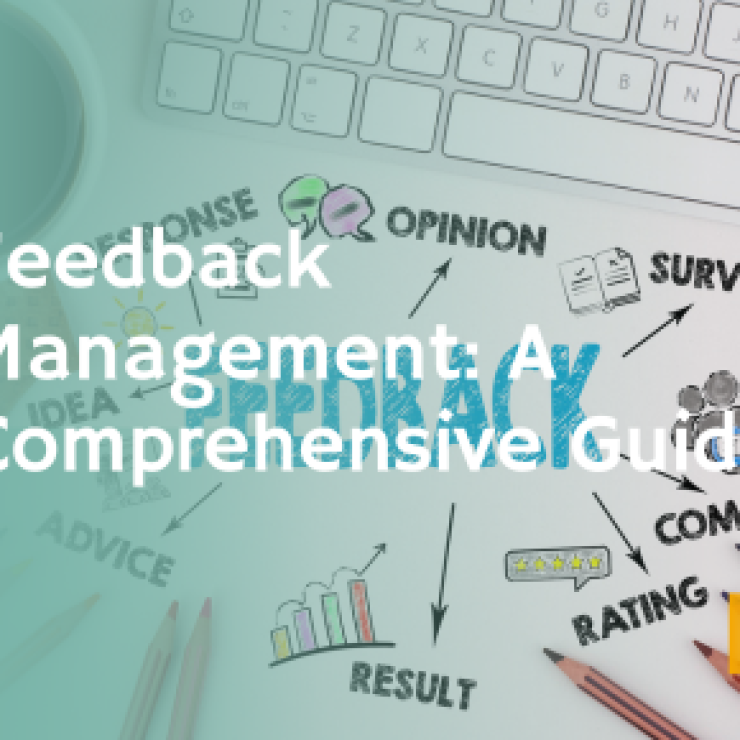Introduction: Definition of Churn Feedback
Churn feedback, simply put, is the information collected from customers who decide to end their relationship with a product or service. This could involve terminating their account, unsubscribing from a mailing list, or discontinuing a recurring purchase or subscription.
The term ‘churn’ is commonly used in industries with subscription-based business models, such as software as a service (SaaS), telecommunications, and online retail.
Understanding the reasons why customers ‘churn’ or leave is essential for businesses, as it provides valuable insights into potential areas of improvement. The churn feedback process often involves collecting data through exit surveys, feedback forms, or direct customer interviews.
Through this information, businesses can identify common themes or trends that lead to customer dissatisfaction, providing a basis for enhancing their product or service offering.
Churn feedback is not just about understanding why customers are leaving; it’s also about learning what could have been done differently to keep them.
This kind of feedback, therefore, is vital in helping businesses make informed decisions, reduce churn rate, and drive customer retention strategies. In the long run, a careful analysis of churn feedback can lead to a significant increase in a company’s customer base and overall revenue.
Detailed Explanation of Churn Feedback
Churn feedback is the detailed information gathered from customers who decide to cease their relationship with a company or its product or service. It is a critical element of customer retention strategies as it helps to understand the reasons behind customer attrition.
Churn feedback typically stems from exit interviews, surveys, or forms where customers explain why they’re discontinuing their relationship with the business.
The feedback can range from concerns about the product or service itself, pricing issues, customer service interactions, or even external factors like changes in personal circumstances.
This data, when effectively analyzed, provides businesses with a roadmap to address and rectify the underlying issues that led to the customer’s departure, thereby improving the company’s offerings and enhancing customer satisfaction.
Relationship Between Churn Rate and Customer Feedback
Churn rate is a business metric that calculates the number of customers who leave a product over a given period divided by the remaining number of customers. It’s a clear indicator of customer dissatisfaction, and thus, a high churn rate is a red flag for any business.
Customer feedback and churn rate are closely interlinked. Feedback, both from active customers and those who’ve churned, provides insights into what a business is doing right and where it needs improvement.
A pattern of negative feedback can often predict an upcoming increase in churn rate, allowing businesses to proactively address issues before they significantly impact customer retention.
On the other hand, positive feedback can help reduce the churn rate. When businesses implement changes based on customer feedback, they show customers that their opinions are valued. This, in turn, builds trust, strengthens the customer-business relationship, and potentially reduces the churn rate.
Importance of Analyzing Churn Feedback for Business Growth
Analyzing churn feedback is of paramount importance for sustainable business growth. By understanding why customers choose to leave, companies can make necessary adjustments to their products, services, or customer service strategies to prevent future customer attrition.
Churn feedback can highlight gaps in a company’s offerings that may have otherwise gone unnoticed. It provides an opportunity to align more closely with customer expectations and market demand, which can lead to increased customer satisfaction, lower churn rates, and, consequently, higher revenue.
Furthermore, understanding churn feedback can also aid in customer segmentation, enabling a business to identify which types of customers are more likely to churn. This allows for targeted marketing efforts and personalized customer outreach, which can improve retention rates.
Types of Churn
A. Definition and Examples of Voluntary Churn
Voluntary churn occurs when a customer consciously decides to end their relationship with a company or service. It’s an active decision taken by the customer, usually as a result of dissatisfaction with the product or service, better offerings from competitors, changes in their personal or financial circumstances, or other similar reasons.
For example, a customer might cancel their subscription to a video streaming service because they’re not satisfied with the content, or they might find a similar service offering better quality or variety at a lower price.
Alternatively, a customer might choose to switch mobile service providers due to poor network coverage or unsatisfactory customer service from their current provider.
B. Definition and Examples of Involuntary Churn
In contrast to voluntary churn, involuntary churn happens when a customer’s relationship with a business ends due to reasons beyond their control. This could be a result of expired credit card information, banking issues that prevent payment processing, or a business’s failure to meet certain regulatory requirements.
For instance, a customer’s subscription to an online magazine may be involuntarily cancelled if their credit card expires and they forget to update their payment information.
Similarly, a customer may lose access to a software as a service (SaaS) product if the company providing it fails to meet data security standards and has to suspend its services.
C. Understanding the Implications of Both Types of Churn
Both voluntary and involuntary churn have significant implications for businesses.
Voluntary churn is a clear sign of customer dissatisfaction, indicating that there are areas in which the business needs to improve. It’s vital for a company to understand the reasons behind voluntary churn and take steps to address those issues.
Otherwise, the company risks losing more customers in the future, which could lead to decreased revenue and a tarnished reputation.
Involuntary churn, on the other hand, doesn’t necessarily reflect negatively on the business’s products or services. However, it does indicate potential problems in other areas, such as billing methods or regulatory compliance.
While involuntary churn may seem less concerning than voluntary churn, it still results in lost customers and revenue. Therefore, businesses should strive to minimize involuntary churn by ensuring smooth transactions and maintaining up-to-date regulatory standards.
In sum, understanding the reasons behind both types of churn and taking steps to address these issues is key to maintaining a healthy customer base and ensuring steady business growth.
How Churn Feedback Helps Businesses Identify Areas of Improvement
Churn feedback is an invaluable resource for businesses, helping them identify areas that require improvement. It offers direct insights into why customers have chosen to end their relationship with a product or service.
The feedback could relate to multiple aspects of a business, from product functionality and pricing to customer service quality and communication effectiveness.
For instance, if several customers express dissatisfaction with the functionality or ease of use of a product, it signals a need to enhance the product’s design or user interface.
If customers complain about customer service, it suggests that the business needs to invest in training and development for its customer service representatives.
Similarly, feedback about high prices may lead a business to reevaluate its pricing strategy or focus on demonstrating more value to justify its pricing.
By carefully analyzing this feedback and identifying common threads, businesses can focus on improving specific areas that directly impact customer satisfaction and, consequently, their churn rate.
B. Role of Churn Feedback in Improving Customer Experience and Retention
Churn feedback plays a pivotal role in improving customer experience and driving customer retention. As it provides firsthand insights into customers’ pain points and grievances, businesses can use this feedback to make changes that directly address customer concerns.
Implementing changes based on churn feedback can lead to improved customer experience. For example, if customers report that they find a product difficult to use, the company can work on simplifying its user interface.
By doing this, the company not only makes its product more user-friendly but also shows customers that it values their feedback and is committed to providing them with the best possible experience.
Similarly, addressing issues that customers have highlighted can improve customer retention. If customers feel that their concerns are heard and acted upon, they are more likely to continue doing business with the company, leading to lower churn rates.
This also fosters a positive relationship between customers and the business, encouraging customers to become advocates for the brand, which can lead to new customer acquisition.
Different Methods to Collect Churn Feedback
A. Exit Surveys
Exit surveys are a powerful tool for collecting churn feedback. They are conducted when a customer decides to end their relationship with the product or service.
These surveys typically involve a set of questions designed to understand the customer’s reasons for leaving. This could include their level of satisfaction with the product or service, the quality of customer service they received, and any areas where they think the company could improve.
Exit surveys can be conducted via email, pop-up prompts on a website, or even through a phone call.
B. Customer Interviews
One-on-one customer interviews provide an in-depth understanding of why a customer chose to churn. They allow businesses to ask open-ended questions and dive deeper into specific issues.
While this method can be more time-consuming than others, the qualitative data collected can provide rich insights into customer churn.
These interviews can be conducted over the phone, through video calls, or in person, providing a space for customers to openly share their experiences and reasons for leaving.
C. Feedback Forms
Feedback forms, often presented online, allow customers to share their thoughts and experiences at their convenience. They can be presented at various touchpoints in the customer journey, not just at the point of churn.
Feedback forms can include multiple-choice questions, rating scales, or open-ended questions. They are an excellent way to collect both quantitative and qualitative data from customers, and because they can be filled out anonymously, customers may feel more comfortable providing honest feedback.
D. Analyzing Customer Service Interactions
Analyzing customer service interactions can also provide insights into why customers are churning. This involves reviewing records of interactions between customers and the customer service team, which can include email exchanges, chat transcripts, or call recordings.
This analysis can reveal patterns or common themes in customer complaints, as well as gauge the quality of customer service being provided.
It’s a passive but effective way of collecting churn feedback, as customers often contact customer service when they encounter issues or before they decide to churn.
Each of these methods has its own strengths and can provide valuable insights into customer churn. Often, a combination of these methods is used to collect a wide range of feedback from different perspectives. The more comprehensive the feedback collection process, the better equipped a business will be to understand and address the reasons for customer churn.
Effective Strategies for Reducing Churn Rate Based on Churn Feedback
A. Tailoring Customer Service Based on Feedback
Churn feedback often provides insight into how a business’s customer service can be improved. If customers are leaving due to poor service experiences, businesses should take steps to improve their customer service quality.
This could involve training customer service representatives more effectively, improving response times, or developing more empathetic communication strategies.
A business that tailors its customer service based on feedback shows customers that it values their opinions and is committed to meeting their needs.
B. Improving Product/Service Quality in Response to Feedback
Feedback from churned customers often contains insights into how a product or service could be improved. This could include feedback on features, usability, pricing, or any other aspect of the product or service.
Businesses should take this feedback seriously and make efforts to address these concerns. Enhancing product quality or service delivery in response to customer feedback can not only reduce churn but also attract new customers, leading to business growth.
C. Fostering Customer Relationships to Improve Customer Loyalty
Churn feedback can help businesses understand the factors that affect customer loyalty. This information can be used to build stronger relationships with customers, leading to increased loyalty and reduced churn.
This could involve personalized outreach, exclusive offers for loyal customers, or just consistently exceeding customer expectations with superior products and exceptional service.
When customers feel valued and appreciated, they are less likely to churn and more likely to advocate for the brand to others.
D. Creating an Effective Communication Strategy to Address Customer Concerns
Communication plays a vital role in reducing churn. Churn feedback can help businesses identify common customer concerns and develop a communication strategy to address these issues proactively.
This can involve regularly updating customers on new features or changes, promptly addressing customer complaints, or simply keeping an open line of communication through newsletters, emails, or social media.
An effective communication strategy based on customer feedback can reassure customers that their concerns are being addressed and their satisfaction is a top priority.
Limitations and Challenges in Churn Feedback
A. Addressing the Biases in Churn Feedback
One of the key challenges in handling churn feedback is addressing inherent biases. Often, customers who provide feedback, especially those who are dissatisfied, may have extreme views that do not represent the views of the majority of customers.
These customers might be more vocal about their experiences, creating a bias in the feedback collected. It’s crucial for businesses to understand this potential bias and take steps to collect and consider feedback from a diverse range of customers, not just those who are the most vocal.
B. Difficulty of Obtaining Accurate and Actionable Churn Feedback
Obtaining accurate and actionable churn feedback can be challenging. Not all customers are willing to take the time to provide feedback when they decide to end their relationship with a company, which can result in a lack of data.
Furthermore, the feedback provided may not always be actionable. For example, a customer might express general dissatisfaction without providing specific details about the issues they faced.
To overcome this challenge, businesses need to design their feedback collection methods carefully to encourage comprehensive and useful feedback.
C. Challenges in Implementing Changes Based on Churn Feedback
Once feedback is collected, businesses face the challenge of implementing changes based on this feedback. Changes may require considerable time, resources, and effort, which may not always be immediately available.
Additionally, some feedback may be contradictory, with different customers having different preferences and opinions, making it hard for businesses to decide on the best course of action.
Companies must prioritize feedback based on factors such as frequency of the issues raised, potential impact on customer satisfaction, and alignment with the business’s strategic goals.
Future of Churn Feedback: Predictive Churn Analysis
A. Introduction to Predictive Churn Analysis
Predictive churn analysis represents the future of churn feedback. It is a proactive approach that uses data analysis and predictive modeling to identify customers who are likely to churn in the future.
Rather than waiting for customers to churn and then collecting feedback, predictive churn analysis enables businesses to predict churn based on various factors and take preventive measures to retain at-risk customers.
B. Role of Artificial Intelligence and Machine Learning in Predictive Churn Analysis
Artificial Intelligence (AI) and Machine Learning (ML) play a critical role in predictive churn analysis. These technologies enable businesses to analyze large volumes of data and identify patterns that may not be apparent through manual analysis.
For example, ML algorithms can analyze customer behavior data, usage patterns, transaction history, and other relevant factors to predict the likelihood of customer churn.
AI can also provide insights into the reasons behind predicted churn, helping businesses to develop targeted retention strategies.
For example, if the AI identifies that customers who use certain features less frequently are more likely to churn, the business could offer tutorials or additional support to encourage greater usage of these features.
C. Benefits and Potential Future Applications
Predictive churn analysis offers several benefits. By identifying potential churn before it happens, businesses can take proactive steps to improve customer satisfaction and retention. This can lead to increased customer loyalty, improved customer lifetime value, and ultimately, greater profitability.
The potential future applications of predictive churn analysis are vast. As AI and ML technologies continue to advance, predictive models will become even more accurate and insightful.
This could enable businesses to predict churn at an individual level, allowing for highly personalized retention strategies. Furthermore, predictive churn analysis could be combined with other predictive analytics applications, such as predicting customer lifetime value or the likelihood of customers to purchase certain products, leading to even more effective customer relationship management.
Conclusion
Churn feedback is a crucial aspect of customer relationship management and business growth. Despite the challenges, understanding why customers leave and using that information to improve is an invaluable process for any business.
With the advent of technologies such as AI and ML, businesses can take a more proactive approach, predicting and preventing customer churn before it occurs. As we look to the future, the role of churn feedback in business strategy is likely to continue growing, making it an essential area of focus for businesses aiming for long-term success.




